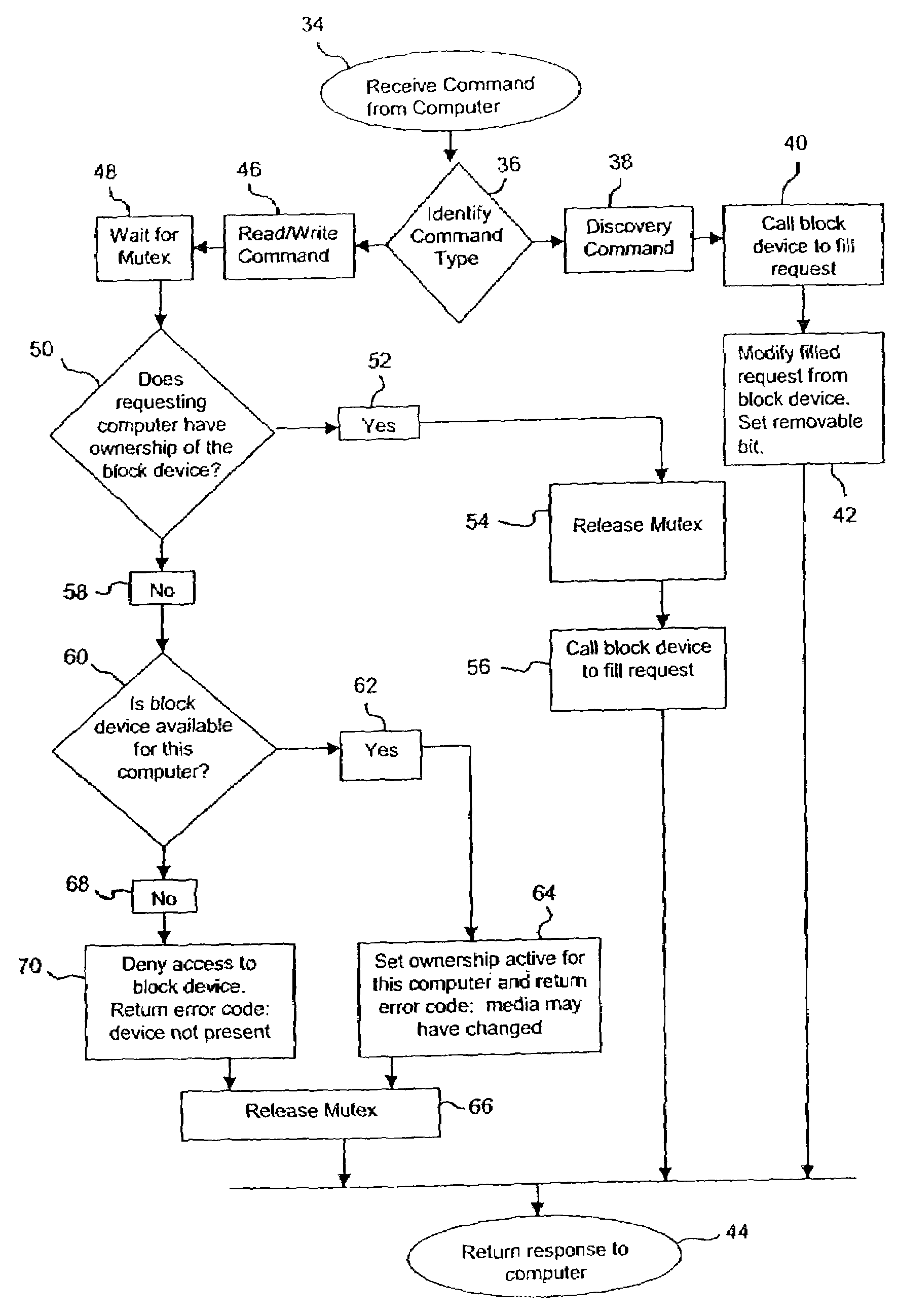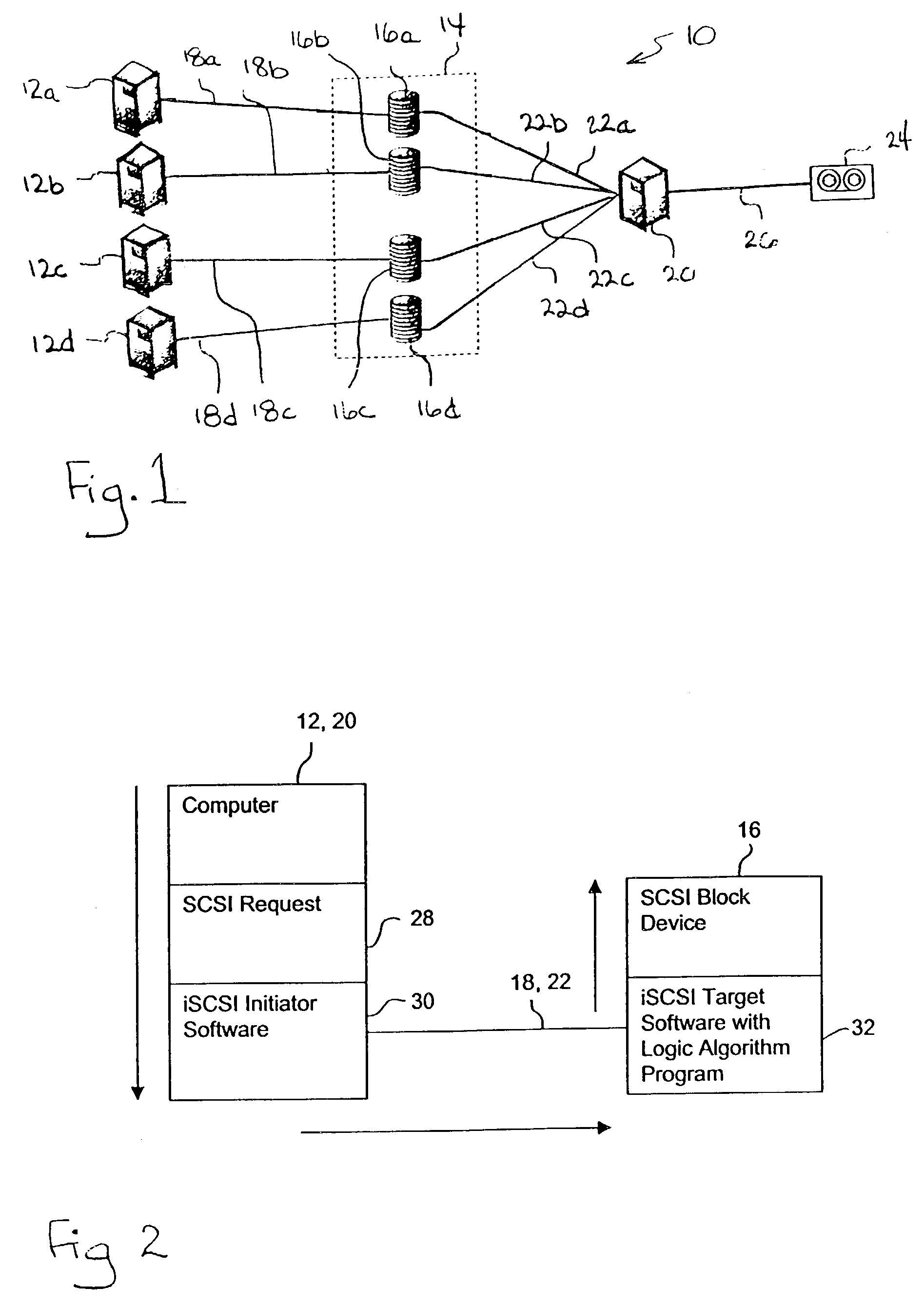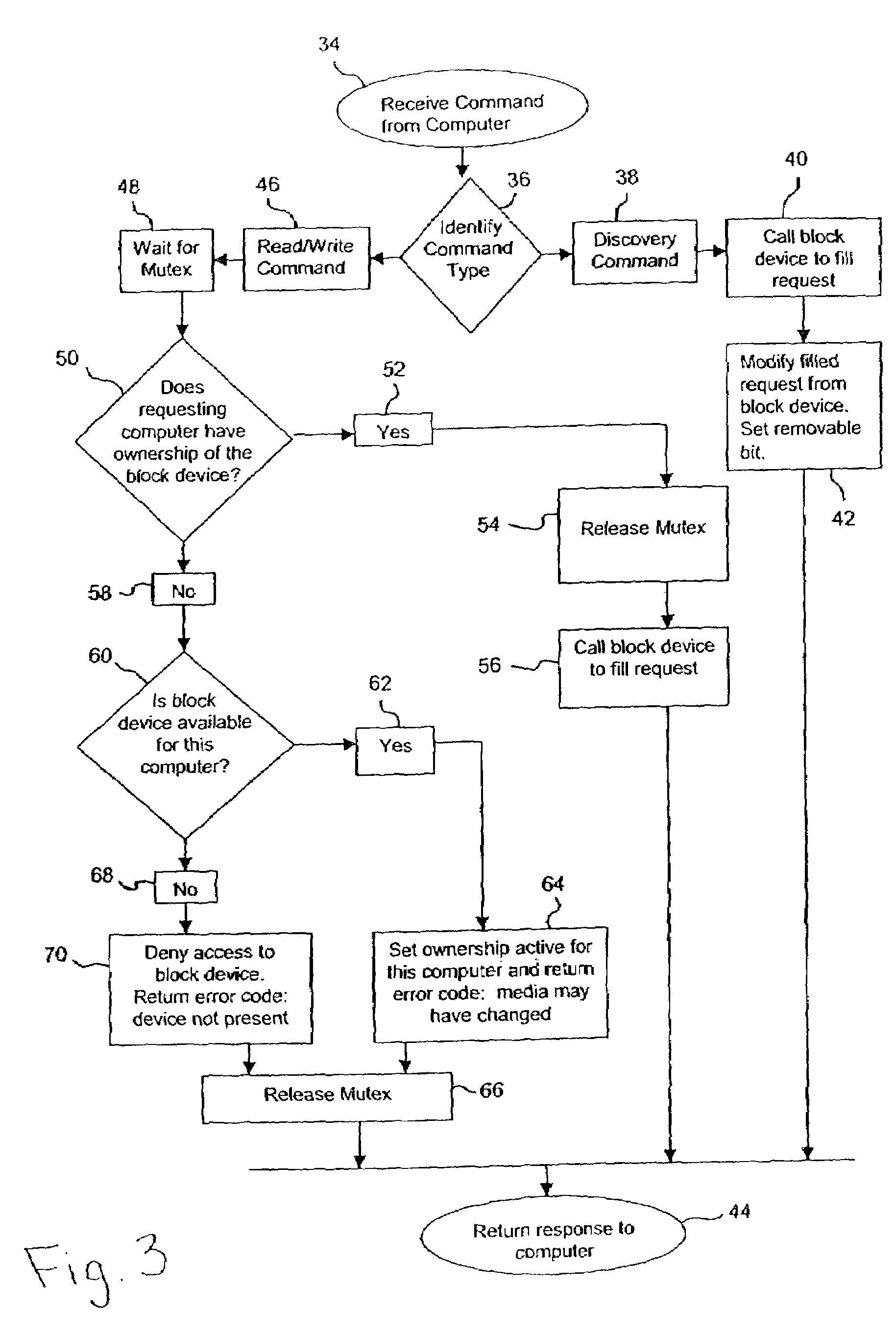System and method for selectively transferring block data over a network
a network and block data technology, applied in the direction of digital computers, input/output to record carriers, instruments, etc., can solve the problems of block storage devices such as a typical hard drive, data transfer performance over a network is somewhat poor, and the cifs protocol requires a rather large overhead to support data sharing,
- Summary
- Abstract
- Description
- Claims
- Application Information
AI Technical Summary
Benefits of technology
Problems solved by technology
Method used
Image
Examples
Embodiment Construction
[0018]Referring to FIG. 1, a system for sharing block data over a network is shown and generally designated 10. For the embodiment shown in FIG. 1, the system 10 includes four application servers 12a-d. It can be further seen that the system 10 includes an appliance 14 that includes four non-removable block storage devices, which in this case are hard drives 16a-d. It can be further seen that the servers 12a-d are connected to the hard drives 16a-d via respective links 18a-d.
[0019]FIG. 1 also shows that a backup server 20 is connected to each hard drive 16a-d via respective links 22a-d. In addition, the backup server 20 is connected to a tape device 24 via link 26. In functional overview, the system 10 allows one of the application servers 12 to access one of the hard drives 16 and write block level data directly to the hard drive 16. The application server 12 then relinquishes control of the hard drive 16. With the block data stored on the hard drive 16, the backup server 20 then ...
PUM
 Login to View More
Login to View More Abstract
Description
Claims
Application Information
 Login to View More
Login to View More - R&D
- Intellectual Property
- Life Sciences
- Materials
- Tech Scout
- Unparalleled Data Quality
- Higher Quality Content
- 60% Fewer Hallucinations
Browse by: Latest US Patents, China's latest patents, Technical Efficacy Thesaurus, Application Domain, Technology Topic, Popular Technical Reports.
© 2025 PatSnap. All rights reserved.Legal|Privacy policy|Modern Slavery Act Transparency Statement|Sitemap|About US| Contact US: help@patsnap.com



